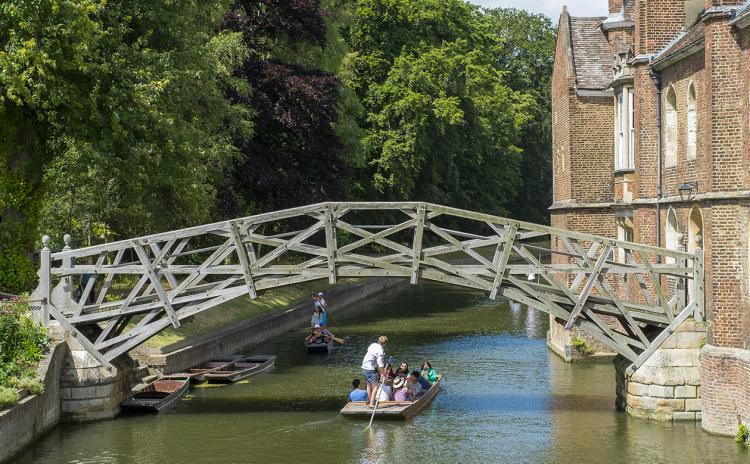The bridge of an interesting form that is called mathematical attracts the attention of townspeople in Queens. Many people do not know its history, when and how it was built. Learn more at queens-future.
History of the bridge construction
The bridge was designed by William Etheridge in 1748. James Essex started the bridge construction in 1749. The architect, William Etheridge, came from a family of carpenters. The man started his career as a carpenter when he worked on Old Walton Bridge. He was the first to produce the design and model for the bridge in Queens. From 1753 he worked as a surveyor on the construction of Ramsgate Harbour in Kent. He was consulted on the state of St Olave’s Bridge in 1761.
The Queens’ Bridge is the first recorded structure of James Essex. After the building of the bridge, he was engaged in the construction of the Essex Building. The man was a good carpenter and did work for many local colleges, including paneling the bridge in Queens.
The construction of the bridge started at the same time as the building of brick walls along the banks of the river. The archives contain information about the funds spent on the construction. The first printed description of the bridge was published in 1753.
The description says that the bridge was completely rebuilt from the monastery to the barn. It is one of the most interesting carpentry works of its kind in England. The bridge is over 50 feet 8 inches long and consists of a single timber arch. In addition, all the elements are interestingly connected to each other. The structure is supported on the stone piers with small holes between them.
The first use of the term Mathematical Bridge was in A Guide through the University of Cambridge of 1803. The design of the bridge resembles Etheridge’s much greater Old Walton Bridge. The bridge was restored in 1866. The local government spent a lot of money at that time.
Decay of the bridge and repair work

The decay of the bridge was inevitable. Any timber structure needs occasional repair work and maintenance. The Queens’ Bridge was no exception.
The original bridge had problems due to the rotting of certain timber elements. Judging by the photographic evidence in the state archives, the main problems were the cross-beams under the bridge that connected together the lower ends of opposing radials. The side ribs were getting high loads and soaked under water pressure. The cross beams began to collapse, and the bridge sagged.
The restoration occurred in 1866. The normal size and shape of cross beams were made under the bridge. Extra layers were not put underneath. In addition, the sloped decking was made. It enables people to use wheeled trolleys over the bridge while moving. The important change in the restoration was the addition of metal clamps on the top rails so that metal hoops could be inserted when required.
Timbers of the structure were lead capping, especially near joints presumably to keep rainwater out of the joints and not decay the bridge.
The bridge reconstruction and interesting facts
The bridge was completely rebuilt to the same design in 1905. William Sinidal was engaged in the construction. The man used oak wood in his work. In this version of the bridge, the joints were fastened by coach bolts, the nuts were on the outer elevations, and the bolt heads were on the internal elevations. Therefore, they are not visible to people passing over the bridge. In the old version of the bridge, the fastenings at the joints were clearly visible at the cross-over between the tangents.
The design of the structure is a great triumph of engineering work. The bridge was built using wooden joints and horizontal elements were on the whole river. The structure is a realization of a wooden arch bridge voussoir, in which individual elements are held in a state of compression under the force of gravity on the whole structure. The voussoir bridge requires strong piers to balance the compression forces during loading.


